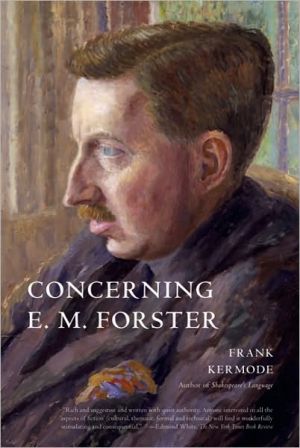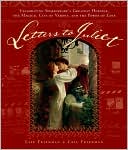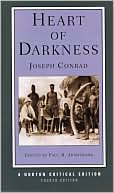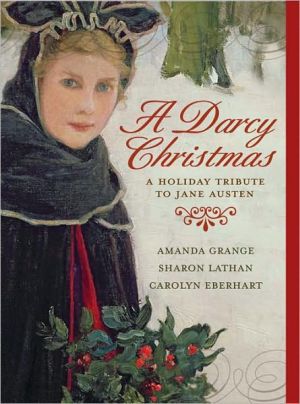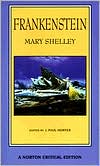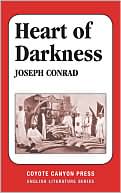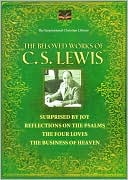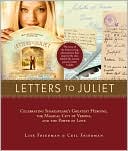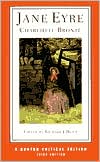Concerning E. M. Forster
Over the past half century, Frank Kermode established himself as on of the finest literary critics of his generation. Here, Kermode assesses the influence and meaning of all of E. M. Forster's novels, as well as his criticism; reflects on his profound musicality (Benjamin Britten though Forster the most musical of all writers); and offers a fascinating interpretation of his greatest work, A Passage to India.\ Cencering E. M. Forster is a brilliant and wide-ranging series of loosely organized,...
Search in google:
A major reassessment of the great English novelistThis impressive new book by the celebrated British critic Frank Kermode examines hitherto neglected aspects of the novelist E. M. Forster’s life and work. Kermode is interested to see how it was that this apparently shy, reclusive man should have claimed and kept such a central position in the English writing of his time, even though for decades he composed no fiction and he was not close to any of his great contemporaries—Henry James, Ford Madox Ford, Joseph Conrad, James Joyce.Concerning E. M. Forster has at its core the Clark Lectures that Kermode gave at Cambridge University in 2007 on the subject of Forster, eighty years after Forster himself gave those lectures, which became Aspects of the Novel. Kermode reappraised the influence and meaning of that great work, assessed the significance of Forster’s profound musicality (Britten thought him the most musical of all writers), and offered a brilliant interpretation of Forster’s greatest work, A Passage to India. But there is more to Concerning E. M. Forster than that. Thinking about Forster vis-àvis other great modern writers, noting his interest in Proust and Gide and his lack of curiosity about American fiction, and observing that Forster was closest to the people who shared not his literary interests or artistic vocation but, rather, his homosexuality, Kermode’s book offers a wise, original, and persuasive new portrait not just of Forster but of twentieth-century English letters.The Barnes & Noble ReviewMost critical writing on E. M. Forster exhibits an apologetic, almost embarrassed sense of itself. Forster's most ardent contemporary admirer is no doubt Zadie Smith, whose affection for him spilled out in her 2004 essay "Love, Actually" and the more recent "E. M. Forster: Middle Manager," reprinted in Changing My Mind. That backhanded title is followed by a cascade of negative qualifiers -- as if Smith needs to first dispense with the unpleasant task of letting you know precisely what Forster isn't -- that wind up as prelude to a lovely appreciation. His American champion Lionel Trilling famously chided him for his reticence toward accepting "greatness." F. R. Leavis began his widely read essay on Forster by writing, "The problem with which E. M. Forster immediately confronts criticism is that of the oddly limited and uncertain quality of his distinction." (Yes, that would be a problem.)
Introduction vii\ Acknowledgements xii\ Part 1\ 1 Aspects of Aspects 3\ 2 Beethoven, Wagner, Vinteuil 28\ 3 Krishna 53\ Part 2\ A Causerie E.M. Forster 79\ Select Bibliography 169\ Index 171
\ Edmund White…a subtle and fascinating book of criticism…In Concerning E. M. Forster, Kermode sinks probes into Forster's book about fiction (the first chapter is called "Aspects of Aspects") and manages along the way to explore aesthetic questions, Forster's life and Forster's links to other writers, like Virginia Woolf and D. H. Lawrence…Although Concerning E. M. Forster is not very long, it is rich and suggestive and written with quiet authority. Anyone interested in all the "aspects of fiction" (cultural, thematic, formal and technical) will find it wonderfully stimulating and consequential.\ —The New York Times\ \ \ \ \ Publishers WeeklyNoted literary critic Kermode (Shakespeare's Language) presents in part his 2007 Clark lectures at Trinity College, Cambridge, given eight decades after Forster's own Clark lectures (published as Aspects of the Novel) and in part a “causerie” (“a loosely organized sequence of observations”), in which “Forster is reduced in size, placed in a wider context, and occasionally scolded.” Kermode provides erudite and good-humored insights into Forster's artistic philosophies, plus deft analyses of the techniques of Forster's contemporaries, such as Henry James (whose style Forster disliked), Virginia Wolfe, Ford Madox Ford and Forster favorite Marcel Proust. Enlarging on Benjamin Britten's remark that Forster was “our most musical novelist,” Kermode shows how musical “transformation and return of phrases was an art he practiced with success in his novels.” Kermode makes the case that Forster's homosexuality was the reason for “his long abstention from fiction” and establishes that Forster placed himself in a “cultivated minority” above the working classes. Kermode is a delightful mentor for readers wishing to reflect not only on Forster's “creativity but on the personal and social circumstances that restricted it.” (Dec.)\ \ \ Library JournalThe renowned British critic Kermode has published many volumes of criticism, including studies of Shakespeare and D.H. Lawrence, as well as a memoir. Here, he focuses on the works and character of 20th-century English novelist and essayist E.M. Forster (1879–1970). The first half contains the three Clark lectures given by Kermode at Cambridge in 2007. The first lecture discusses Forster's Aspects of the Novel, the second looks at Forster's love of classical music, and the third examines A Passage to India, which Kermode considers Forster's greatest novel. The second half, titled "E.M. Forster: A Causerie," is a free-form rambling commentary on the writer's literary style and personality traits. Such a meandering method presents a well-rounded portrait of the author, warts and all, and it allows Kermode to praise Forster while pointing out aspects of the writer that perplex him. VERDICT For all dedicated devotees of Forster and those who enjoy reading about 20th-century British literature, as well as admirers of Kermode.—Morris Hounion, NYC Coll. of Technology Lib., CUNY\ \ \ \ \ The Barnes & Noble ReviewMost critical writing on E. M. Forster exhibits an apologetic, almost embarrassed sense of itself. Forster's most ardent contemporary admirer is no doubt Zadie Smith, whose affection for him spilled out in her 2004 essay "Love, Actually" and the more recent "E. M. Forster: Middle Manager," reprinted in Changing My Mind. That backhanded title is followed by a cascade of negative qualifiers -- as if Smith needs to first dispense with the unpleasant task of letting you know precisely what Forster isn't -- that wind up as prelude to a lovely appreciation. His American champion Lionel Trilling famously chided him for his reticence toward accepting "greatness." F. R. Leavis began his widely read essay on Forster by writing, "The problem with which E. M. Forster immediately confronts criticism is that of the oddly limited and uncertain quality of his distinction." (Yes, that would be a problem.)\ What, then, are we to do with this old Edwardian, who worried repeatedly about the durability of his work and the particular vision that sustained it, who constantly seemed to fret over his dissipating creativity as a novelist? A writer who seems to share a moment more comfortably with Galsworthy and Bennett than with Woolf and James and Joyce, at the "fag-end of Victorian liberalism," as he put it?\ Frank Kermode draws attention to the odd sense of critical anxiety near the beginning of Concerning E. M. Forster. "A good deal of what has been written on Forster has this shape: he irritates readers who nevertheless feel obliged in the end, to do him honour." Alert to this discomfiture, he allows that "the causes of irritation may well be closely related to the causes of admiration." Turning this nice observation on its head, he sets out to figure how the very limits of Forster's novels and criticism might signal not his shortcomings as a writer but, paradoxically, his singularity as an artist. Where there is critical smoldering, might there also be some artistic fire?\ As undazzling as the title to Kermode's book sounds (you wonder what titles were vetoed by the publisher in its favor), it is a rare case of truth in advertising: "Not that I intended, or could have achieved, unstinted eulogy" for Forster, he writes, he is interested in what remains enigmatic about the novelist, and proudly affirms that he will even be "occasionally scolded for not being altogether the kind of author I should have preferred him to be." Concerning E. M. Forster is unapologetically old-school in its aims and argument, which is its delightful and discriminating strength. It's still a marvel to read Kermode at his pithy best, which this book represents both for devotees of Forster or for those less inclined to return to the novels. Originating, like Forster's own 1927 Aspects of the Novel, in the annual Clark Lectures delivered at Trinity College, Cambridge, Concerning E. M. Forster is a brief but fascinating examination of a writer who benefits enormously in the exchange. Probably more famous than read today, and at any rate a dubious guide to how fiction works, Aspects can seem a genial but creakily dated apology for a vision of the novel that was already quaint when it appeared in print. Its distinctions of flat and round characters, its disdaining silence on so many interesting writers of the '10s and '20s, and its notorious shadow-boxing with James on pattern versus rhythm in the novel-a bout that Forster saw in terms of whether the novel comes down on the side of life or of art. If Forster landed some shots in the lectures, posterity makes it appear that he was fighting above his weight.\ And he probably was, but Kermode circumvents the issue by allowing Forster's thoughts in Aspects to reanimate his own novels. When Forster delivered the lectures that would form Aspects, he was 48, the author of a rapid succession of four novels written in the first decade of the century (the last published being Howards End, in 1910) and, after a long period of fits and starts, the celebrated writer of A Passage to India (1924). (His "gay novel" Maurice, finished in 1914, would not appear until after his death in 1970.) He never produced another novel, and though he remained a popular BBC personality, biographer, and memoirist, Aspects sounds more a swan song than a clarion call.\ One thing Forster did do in the remaining 43 years of his post-Aspects life was to collaborate with Benjamin Britten on writing the libretto to the latter's 1951 opera, Billy Budd. The musical interests of Forster -- an avid pianist -- interest Kermode greatly, and Concerning E. M. Forster's treatment of the role of music, both generally and in the specifics of Forster's novels, is a critical tour de force. What does it mean for Britten to declare Forster "our most musical novelist"? Discussing Forster's fetishization of rhythm, Kermode quotes his oddly personal affection in Aspects for the career of the fictional composer Venteuil in Swann's Way and how the "little phrase" is a salubrious example of the novel's inner stitching: The phrase "has a life of its own... it is almost an actor, but not quite... Its power has gone towards stitching Proust's book from the inside... There are times when the little phrase-from its gloomy inception, through the sonata into the septet, means everything to the reader. There are times when it means nothing and is forgotten; and this seems to me the function of rhythm in fiction: not to be there all the time like a pattern [as in James] but by its lovely waxing and waning to fill us with surprise and freshness and hope."\ That quality of surprise and freshness and hope is what Forster treasures in the novel as a craftsman -- they are not merely little delights but the very stuff of creative inspiration for him. (Kermode emphasizes that inspiration for Forster is a quasi-mythical and quasi-mystical experience, part conscious, part a matter of "dipping one's pail into the subconscious," as Forster liked to put it.) It is why musical scenes can have the kind of grave presence at the center of virtually every one of his novels, from the riotous night at the opera in Where Angels Fear to Tread to the wretched moment in Howards End when Leonard Bast first crosses paths with the Schlegel sisters at a performance of Beethoven's Fifth Symphony to the pious Hindu Godsole's strange song at the end of Fielding's party in A Passage to India. Far from instances of "technical cleverness," Forster's musical plottings occur in proximity to great happenings in his novels. Kermode compares Forster's notion of music and its relation to inspiration to a pianist searching out the relations of chords on the keyboard-or better yet, the translation of a piece written for a specific instrument (say, a saxophone) to another (a banjo). "Faking" is the musical word for this-and it's an inspired way of looking at how Forster viewed what held together his own novels. Whatever in fact transpires in the caves of Marabar in A Passage to India, the trigger for the court case against Dr. Aziz at the heart of the novel, Kermode writes that "Foster eventually had the excellent idea of faking it by leaving everything about it in doubt."\ Kermode's Forster never loses his enigmatic character, and as an essay plumbing the novelist's encounter with inspiration, greatness, and death, Concerning E. M. Forster presents a figure one feels he or she is meeting for the first time. You expect Elgar, you get late Beethoven instead. Forster's gesture in having Lucy Honeychurch play (badly) Beethoven's final piano sonata, the jagged Opus 111, in a key moment in Room with a View is ferociously strange, and it moves Kermode. (It is a remarkably difficult piece of music to perform if one's last name isn't Brendel.) Though Kermode surprisingly doesn't remark upon it, we recall this sonata's place in Doctor Faustus, where Kretschmar discusses it at length. There Mann writes that "it was not easy to see [Sonata 32 in C Minor] as a well-rounded and intellectually digested work, and which had given his contemporary critics, and his friends as well, a hard aesthetic nut to crack." Forster, as Kermode reads him, is no less easy to break open, and the effort he makes is redemptive and on the terms I imagine that Forster, no fan himself of critics, would have accepted. I wish that Kermode had more forcefully looked another medium-film-and engaged the Merchant & Ivory/David Lean movies, which slapped an English Heritage blue plaque on Forster's novels, stripping away the weird beauty and what Wolff called the "mystical realism" of the prose but perhaps sending a few filmgoers his way as compensation. It's only a quibble. What makes Kermode's Concerning E. M. Forster remarkable is that he is himself alive to the Forsterian sensation of surprise, that he reads Forster again with a vibrato sensitivity to his own reaction as a reader. --Eric Banks\ Eric Banks is the former editor of Bookforum. He has contributed to The New York Times, Slate, The Guardian, and the Financial Times and is a member of the National Book Critics Circle board of directors.\ \ \
